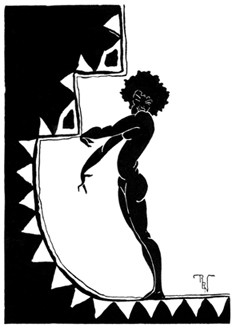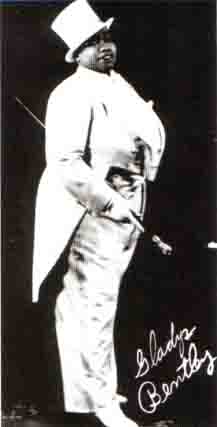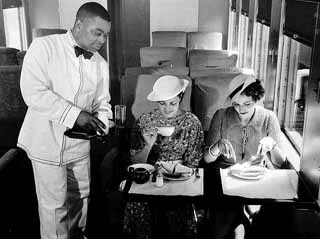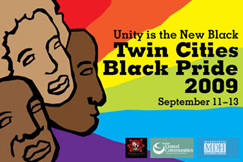Difference between revisions of "Twin Cities Black Pride"
m (Protected "Twin Cities Black Pride" [edit=sysop:move=sysop]) |
|||
| (One intermediate revision by one other user not shown) | |||
| Line 100: | Line 100: | ||
| + | <div style="text-align: center;"> | ||
''Recent Past'' | ''Recent Past'' | ||
| + | </div> | ||
| Line 128: | Line 130: | ||
Black Pride intends to “raise the bar” for 2010; organizers seek a four-part reconsideration of the group’s mission. First, the committee wishes to accommodate the needs of youth and families—a chemical and tobacco-free picnic will help to provide a space to suit them. Second, Black Pride intends to break the ignorance that separates queers people of color from the government; committee members will work for social justice and advocacy. Third, Black Pride is seeking out other minority communities—including Shades of Yellow (SOY)—in a campaign to promote diversity and community outreach. Lastly, and perhaps most importantly, the group will work for events that support the community’s health and wellness. | Black Pride intends to “raise the bar” for 2010; organizers seek a four-part reconsideration of the group’s mission. First, the committee wishes to accommodate the needs of youth and families—a chemical and tobacco-free picnic will help to provide a space to suit them. Second, Black Pride intends to break the ignorance that separates queers people of color from the government; committee members will work for social justice and advocacy. Third, Black Pride is seeking out other minority communities—including Shades of Yellow (SOY)—in a campaign to promote diversity and community outreach. Lastly, and perhaps most importantly, the group will work for events that support the community’s health and wellness. | ||
| + | |||
---- | ---- | ||
Latest revision as of 11:20, 1 May 2010
Twin Cities Black Pride – Boom Island, Minneapolis
Information for this page is predominantly the result Earnest Simpkin's suggestions and stories. Simpkins is the current Chair of Twin Cities Black Pride. The page is available for the public to edit.
Urban Renaissance
| Richard Bruce Nugent was one of many artists influenced by styilization during the Art Deco Period. He drew this image for Fire!! (1926), a magazine "devoted to young negro artists," which included works from Langston Hughes and Countee Cullen. |
Twin Cities Black Pride builds upon and commemorates the rich history of queer life in America’s communities of color. In a sense, this is a history of cultural contributions that became popularized in cities. New York’s Harlem neighborhood was home to great thinkers and musicians of the day (as well as their devotees), but other urban centers—such as New Orleans, Chicago, Washington, D.C., Kansas City, and St. Louis—were also sites of vibrant communities.
|
| Other queer notables from this time include Alice Dunbar Nelson, Jessie Fauset, and Angelina Weld Grimké.(4) These women and many other Renaissance contributors participated in intellectual circles and in a popular “House Rent Party” culture, where artistic apartment occupants threw get-togethers in order to pay rent.
|
Galdys Bentley performed in a white tuxedo at Harlem's hottest nightclubs. |
Railroad Men
Communities of color in the Twin Cities have a strong connection with Minnesota’s industrial past. Physical testaments to this history almost vanished from the urban landscape—railroads disappeared and became bicycle paths; factories vanished and shopping malls took their place; even old warehouses experienced rebirth as luxurious apartments.
These changes are especially evident along the Mississippi River’s urban parkland, as either embankment once provided the most level grade for interurban railroads.(5) By the 1920s, much of the downtown riverfront was a hopeless tangle of rail lines, maintenance yards, and supporting factories.(6)
| The railroads may have been terrible stewards of the environment, yet the Great Northern once employed many local African-Americans.(7) Working as “porters” ( i.e. carriers of luggage, waiters, attendants of sleeping cars), these individuals earned stable (if woefully unequal) pay long before the Civil Rights Movement spurred equal-hiring practices in other companies and industries. The Great Northern Railway merged with other railroads in the early 1970s, and the riverfront languished for years an abandoned and polluted industrial site.
|
A Twin Cities railroad porter in 1935. Image Courtesy of the Minnesota Historical Society. |
A History of Black Pride
The cultural rebirth of Minneapolis’ riverfront in the latter half of the 20th century is similar to a cultural rebirth of queer people of color during the same time. The revolutionary challenges of the Civil Rights generation provides context to the era’s great queer thinkers like James Baldwin, Audre Lorde, and Barbara Smith. The concept of “Black Pride” emerged during this time as a method of establishing self-worth and dignity to a freed people. To some, the slogan remains popularly attributed to Black separatism.
The origins of queer Black Pride date to Washington, D.C. in the late 1970s, when unofficial gatherings attracted East Coast populations and those of inland cities—as far as Atlanta. One can consider these semiprivate celebrations as the successors of private “house rent parties” during the Roaring 20s. The celebrations continued, yet queer life in the African-American community manifested in other forms. Notably, young LGBT people of color participated in the House Ball scene, made famous by the popular film “Paris is Burning” and by Madonna in “Vogue.”
Locally, the desire for a queer Pride celebration for people of color mounted in the late 1990s. Family members Dennis Anderson and Roxanne Anderson helped to organize the Twin Cities first Twin Cities Black GLBT Pride celebration in 1999.(9) The International Federation of Black Prides (IFBP) organized in the same year. From its inception, the Twin Cities organization sought to host an event with more significance than a mere party—organizers wanted to provide an opportunity for community support and education “beyond celebration.”
In this and other respects, Twin Cities GLBT Black Pride influenced the IFBP. The event’s supportive, meaningful, and dynamic elements drew crowd from across the Upper Midwest Region. There were some drawbacks—events seemingly catered to an older crowd—yet the event provided an essential foundation to Minnesota’s queer populations of color.
Recent Past
| Twin Cities Black Pride Logo by Phong Tran, 2009 |
In part, Twin Cities GLBT Black Pride’s success led to its downfall. The organization inspired strong opinions and demands that led to contentions and disagreements. The disagreements produced another celebratory event, Soul Essence, in 2002.
In 2006, the stresses of organizing such an important event proved too great—the overworked and overstressed committees disbanded. For two years, the Twin Cities were not home to a Pride celebration organized for people of color. |
The local community lamented the loss, and expressed a desire for a new Black Pride celebration. In 2008, Color CoordiNATION helped to initiate a conversation about the past and possible future of Black Pride in the Twin Cities. The dialogue opened the door for past committee members and new volunteers to work again on setting up an event—the new “Twin Cities Black Pride” built on previous events and sought new ways to serve the community.
This led to new events in 2009 that represented the diversity evident within the queer communities of color. Black Pride hosted a popular “Literary Café,” in conjunction with Color CoordiNATION, where G. Winston James, Lisa C. Moore, and Alphonso Morgan carried the tradition of rich queer African American literature. The Gay 90s hosted a music competition where 9 contestants did their best to ‘Blow Up the Mic,” a popular Red Party at Particks Cabaret (see: the West Bank Firehouse) provided HIV testing and awareness-raising, and a spiritual service at the Parkway United Church in Christ served the needs of the religious on Sunday before the picnic at Boom Island.(10)
Black Pride intends to “raise the bar” for 2010; organizers seek a four-part reconsideration of the group’s mission. First, the committee wishes to accommodate the needs of youth and families—a chemical and tobacco-free picnic will help to provide a space to suit them. Second, Black Pride intends to break the ignorance that separates queers people of color from the government; committee members will work for social justice and advocacy. Third, Black Pride is seeking out other minority communities—including Shades of Yellow (SOY)—in a campaign to promote diversity and community outreach. Lastly, and perhaps most importantly, the group will work for events that support the community’s health and wellness.
(1) Knopf, Marcy Jane. "The Harlem Renaissance." From Lesbian Histories and Culutures: An Encyclopedia. New York: Garland Press, 2000. Pages 356-357.
(2) http://www.glbtq.com/literature/african_am_lit_gay.html. Retrieved 3/31/10.
(3) Notably in his short story '"Smoke, Lillies, and Jade," first pubished in Fire!! (1926).
(4) http://www.glbtq.com/literature/african_am_lit_lesbian.html. Retrieved 3/31/10
(5)Millet, Larry. Twin Cities Then and Now. St. Paul: Minnesota Historical Society Press, 1996. Page 15.
(6)Author unknown: "Boom-Nicollet Island Pedestrian Bridge--Full name: Wisconsin Central Railroad Bridge (ca. 1901-present)" http://stanthonymain.com/bridges/NicBoom.php
(7)Taylor, Quintard. "The Forging of a Black Community: Seattle's Central District from 1870 Through the Civil Rights Era. Seattle: University of Washington Press, 1994. Page 25.
(8)"Grand openings planned for two riverfront parks." The Minneapolis Star-Tribune, 6/26/1987. http://nl.newsbank.com/nl-search/we/Archives?p_product=MN&p_theme=mn&p_action=search&p_maxdocs=200&p_topdoc=1&p_text_direct-0=0EFE4921808F6B6E&p_field_direct-0=document_id&p_perpage=10&p_sort=YMD_date:D&s_trackval=GooglePM
(9)Henry, Imani. "Black Gays Celebrate Pride." Worker's World, June 1999. http://www.workers.org/ww/1999/blackpr0610.php
(10)Sanna, James. "Get Ready, Get Set: It's Black Pride!" TheColu.mn, 9/11/2009. http://thecolu.mn/340/get-ready-get-set-its-black-pride
Part of Minneapolis/St. Paul, MN: 100 Queer Places in Minnesota History, (1860-1969), (1969-2010)



